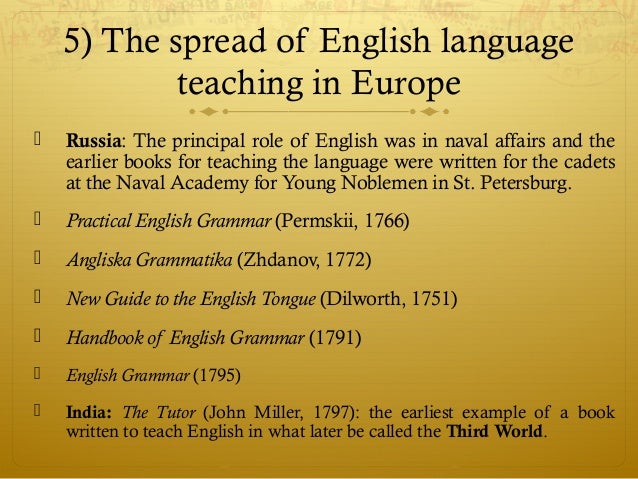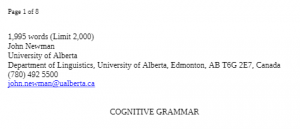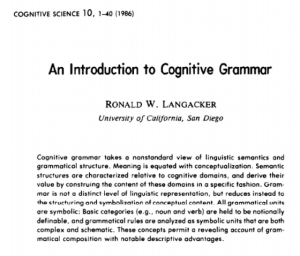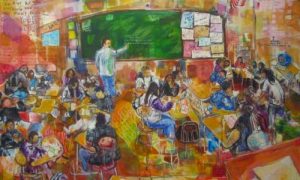PDF #20 – Innovations in learning technologies for English language teaching
In this early part of the 21st century the range of technologies available for use in language learning and teaching has become very diverse and the ways that they are being used in classrooms all over the world, as illustrated in this book, have become central to language practice.
Times Have Changed
Times have changed, teachers have evolved, and we now have a new breed of
learning technologists. As in Hong Kong, the first changes began in the classroom itself – new technologies such as overhead projectors, interactive whiteboards, laptop computers and wireless internet have opened up the classroom to the outside world. Teachers who spent their lives managing with a textbook, a tape recorder and a blackboard are now adept at using PowerPoint to present grammar, playing podcasts to practise listening skills, pulling texts off the world wide web to introduce reading skills and perhaps most ground-breaking of all – empowering students by giving them access to a wide range of web-based tools that allow them to publish work and engage with live audiences in real contexts.
And that is just the beginning – because just as technologies have begun to change the way that English is learned in the classroom, even bigger changes seem to be taking place outside it. In fact, the digital revolution in learning now threatens to undermine the classroom completely as a place of study. Learning English through mobile devices gains credibility every day and the increasing popularity and rapidly diminishing cost of tablet devices reinforce this by providing a format that really is capable of delivering courseware. Factor in the growing interest in Massive Open Online Courses (MOOCs), providing large-scale (and free) learning interventions, and it is clear that technology still has much to offer ELT.
Virtual Reality (VR) in Education
Virtual Reality technology is already the hottest thing in the tech world. Big companies are gearing up for a brutal war over this technology including Google, Sony, Oculus (backed by Facebook), Samsung, and more. One of the areas of application of VR technology is education. With VR, students can learn via interacting with a 3D world. Google has been on the forefront of introducing experiential learning in schools through VR technology.
Artificial Intelligence and Machine Learning
Artificial intelligence is being applied in all levels of technology, from the lowest to the most advanced levels. AI is used in schools to automate key activities such as grading of subjects and providing feedback on areas that need improvement. It is also used to enhance personalized learning among students, especially those with special needs. Through machine learning, adaptive programs have been developed that care for the individual needs of students. AI tutors have been developed to teach students subjects such as mathematics and writing.
Cloud Computing for Education
Educational resources can be accessed from any part of the world thanks to cloud computing technology. Vital resources such as written lessons, audio lessons, videos, and video assignments can be stored on a school’s cloud terminal. Students can access these resources from the comfort of their homes and complete and submit the assignments back to their tutors. Flimsy excuses that students give for not doing assignments may be a thing of the past. Cloud computing will eliminate the hassle of carrying tons of books or practically living at your local library. This technology also allows students to chat live with their tutor.
3D Printing
3D printers are already causing ripples in the education sector and students are loving them. Content that was previously taught via text books can now be expressed through 3D models. Through this printing technique, students can have a better understanding of something that was thought to be complex. In higher educational institutions, 3D printing is used by engineers and system designers to develop prototypes to be used in the development of final systems. 3D printing takes concepts and makes them real.
Social Media in Educational Institutions
Educational institutions have not been left behind in capitalizing on the impact of social media. In fact, most of these social networking sites were developed on campuses and the first users were college students. Universities and colleges can connect with each other through social networking sites even if they are several continents apart. Through these sites, they are able to organize contests, meetings, and parties. Students from different schools use social media to exchange ideas which can change lives.
The Use of Biometrics in Schools
No more truancy and cheating! The introduction of biometric systems in schools has helped to streamline the education and enhance discipline. Facial recognition, fingerprints, voice recognition, and eye tracking are some of the biometric methods that schools have implemented to streamline their operations. Apart from being used to monitor a student’s class attendance, they are used when borrowing school properties such as books in the library. Teachers use eye tracking methods to monitor how students are absorbing content that they have been taught.
Widespread access of the Internet is one factor that has accelerated the implementation of technological innovations in the education sector. Ideas spread fast and people can research the best methods for using technology in education. Hardware companies are producing devices such as laptops and tablets which are customized to meet specific education needs. Cut-throat competition among different technology firms is another factor that is will accelerate the rate of technology innovations. The future of education certainly looks bright!
After reading “Innovations in Learning Technologies” you can check important issues for ESL teachers on the section PDFs, and visit my YouTube channel.









